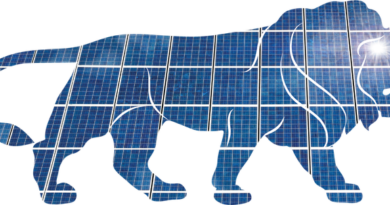Next-Gen Solar Panels: Japan’s Game-Changing Energy Revolution
Currently, Japan is once again leading the charge into the future with a groundbreaking development in renewable energy technology—perovskite solar panels. Remarkably, this revolutionary next-gen solar panels advancement has the potential to produce as much energy as 20 nuclear reactors, making it a true game-changer in the global push for cleaner, sustainable power.
Table of Contents
- 1 How a Natural Disaster Sparked a Green Revolution
- 2 What Makes Perovskite Solar Panels Special?
- 3 Focus on a Carbon-Free Future
- 4 A Strategic Advantage in Iodine Production
- 5 Sekisui Chemical Leads the Charge
- 6 Why This Innovation Matters Globally
- 7 Solar Panel Benefits That Can’t Be Ignored
- 8 The Best Solar Panel for Home Use?
- 9 Addressing Global Energy Demand
- 10 A Solar Power System for the Future
- 11 Integrating the Technology in Urban Infrastructure
- 12 The Road to Commercial Availability
- 13 Leading the Global Solar Charge
- 14 Visit Solarclue for Trusted Solar Solutions
- 15 Stay Updated with Solar Trends
- 16 Conclusion: The Future of Solar Energy is Bright
- 17 FAQs
How a Natural Disaster Sparked a Green Revolution
Following this event, the tragic 2011 earthquake and tsunami, followed by the Fukushima nuclear disaster, was a pivotal moment for Japan. Consequently, it marked a significant shift in national energy policy, pushing the country to reduce dependence on nuclear and fossil fuels. Since then, Japan has heavily invested in solar energy, setting the stage for this incredible innovation.
What Makes Perovskite Solar Panels Special?
In contrast to traditional silicon-based solar cells, next-gen solar panels utilize a synthetic mineral with a unique crystalline structure. Notably, this material offers multiple benefits:
- Lighter and more flexible than silicon
- Cheaper to produce
- Achieves up to 43% solar panel efficiency, compared to silicon’s 29%
Therefore, this massive leap in solar panel efficiency means more energy output per square meter, effectively addressing spatial constraints in urban Japan.
Focus on a Carbon-Free Future
Looking ahead, Japan’s vision for a zero-emission future by 2050 relies heavily on this new solar technology. According to projections, by 2040, perovskite panels could generate up to 20 gigawatts of electricity—a major boost in achieving carbon neutrality.
A Strategic Advantage in Iodine Production
Interestingly, Japan also enjoys a critical edge as the world’s top producer of iodine, an essential ingredient in perovskite solar cells. As a result, this strategic resource bolsters Japan’s goal of becoming a dominant force in the solar power industry.
Sekisui Chemical Leads the Charge
Moreover, working closely with the Japanese government, Sekisui Chemical is set to mass-produce next-gen solar panels by 2030. This collaboration is aimed at large-scale deployment both domestically and internationally, thereby strengthening Japan’s global leadership in renewable energy.
Why This Innovation Matters Globally
Undoubtedly, the implications of this innovation stretch far beyond Japan. Importantly, the enhanced solar panel efficiency, combined with lower production costs and scalability, could transform the global energy landscape. Countries facing energy shortages or relying heavily on fossil fuels can now look towards a viable and sustainable alternative.
Solar Panel Benefits That Can’t Be Ignored
The arrival of perovskite technology brings new solar panel benefits that traditional panels cannot match. For instance:
- Higher energy yields
- Lightweight and flexible for easy installation
- Cost-effective manufacturing
- Lower environmental impact
Thus, these benefits make next-gen solar panels ideal for residential, commercial, and industrial applications.
The Best Solar Panel for Home Use?
While the technology is still scaling up, it’s poised to become the best solar panel for home and commercial use. In fact, with their superior efficiency and flexibility, these panels could easily outshine existing solar panel for home options.
Addressing Global Energy Demand
As the world’s population and energy needs grow, scalable and efficient solutions are essential. Fortunately, Japan’s innovation offers a clear path forward, combining high output with minimal environmental footprint.
A Solar Power System for the Future
Ultimately, a well-designed solar power system incorporating next-gen panels can deliver unmatched performance. Whether for individual homes, businesses, or grid-scale applications, the possibilities are nearly limitless.
Integrating the Technology in Urban Infrastructure

Urban areas, in particular, can benefit from this technology. Thanks to its lightweight and flexible nature, next-gen panels can be integrated into windows, walls, and even vehicles—thereby maximizing energy generation in space-constrained cities.
The Road to Commercial Availability
Although still in its early phases, commercial availability is expected by 2030. Encouragingly, as research and manufacturing scale up, we can expect wider adoption across multiple sectors.
Leading the Global Solar Charge
As a result, Japan’s proactive stance places it at the forefront of the global solar panels market. By leveraging its natural resources and technological prowess, it aims to outpace traditional leaders like China and the U.S.
Visit Solarclue for Trusted Solar Solutions
For those looking to explore current best solar panel options or learn more about solar technology, visit solarclue.com and get started on your renewable energy journey today.
Stay Updated with Solar Trends
To stay informed about the latest in solar power innovation and sustainable living, don’t forget to check out our insightful articles at blog.solarclue.com.
Conclusion: The Future of Solar Energy is Bright
Overall, Japan’s development of next-gen solar panel technology signifies a major leap in the solar energy sector. Offering superior solar panel benefits, higher solar panel efficiency, and a clear path to carbon neutrality, it’s poised to become a cornerstone of global energy strategies. The world watches as Japan redefines what’s possible in renewable energy.
Don’t miss your chance to be part of the solar revolution. Dive into the future of energy—only at solarclue.com.
FAQs
1. What is a perovskite solar panel?
A perovskite solar panel is made using a synthetic mineral that offers higher efficiency, flexibility, and affordability compared to traditional silicon panels.
2. How efficient are next-gen solar panels?
They can reach up to 43% efficiency, significantly higher than the 29% maximum of silicon-based panels.
3. When will next-gen solar panels be available commercially?
Japan aims for mass production and global distribution by 2030.
4. Are next-gen panels the best solar panel for home use?
Given their high efficiency and flexible design, they have strong potential to become the top choice for residential use.
5. How can I stay updated on solar technology trends?
Visit blog.solarclue.com for regular updates, expert insights, and industry news.




